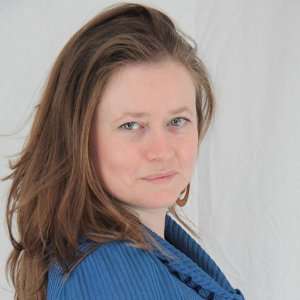After beginning their new season at the Southbank Centre with a 70th anniversary gala on the 27th September, the Philharmonia Orchestra continued in style on Thursday night with a concert of two contrasting yet attractive halves; the first pairing Ives and Berg, the second, Schubert’s Symphony no. 9 in C, “The Great”.
Ives’ music is considered to be well ahead of its time. Indeed, The Unanswered Question foreshadows the minimalism of composers like Górecki and Pärt by many years, with slow moving strings providing a mystical backdrop to a querying trumpet and frustrated woodwinds. And yet Christoph von Dohnányi and the Philharmonia also brought a Straussian feel to the piece, linking it very firmly with both the old and the new. Traditionally the strings should be offstage, but given the size of the orchestra’s string section this was likely deemed logistically unwise. Instead the woodwinds were placed facing away from the audience (and their fellow orchestra members) at the top of the stage, while the trumpet sang out from an unseen location off-stage. It was an effective placement, the trumpet’s first question coming from nowhere across the mystical stillness of the strings. The woodwind became more intense with each answer, offering a genuine sense of frustration, before the piece faded back into the ether.
Pairing the Ives with Berg’s Violin Concerto was an inspired choice, both works being full of symbolism and reaching for the beyond. The final work completed before his death, the Violin Concerto is often viewed as a requiem for Berg as well as the dedicatee, Manon Gropius, daughter of Alma Mahler and her second husband, architect Walter Gropius, though it is not the only work of his littered with personal musical references.
Berg is considered the most successful of the Second Viennese School in that he combined twelve-tone music with Romanticism and Viennese traditions. And yet interpretations of his music so often focus on the supposedly more intellectual aspects of serialism and neglect the Romantic who had as much in common with Mahler and Strauss and he did Schoenberg. And so Carolin Widmann and the Philharmonia’s performance was a revelation. Expressive, warm, rich, terrifying, menacing, explosive, even moments of humour; this was a full-blooded exploration of the gamut of human emotion. Dohnányi pulled out textures and opened up the work, showing and communicating a deep understanding of its complexity as well as its expressiveness. Widmann devoured the music with total ardour, switching between warm, rich, dark, lyrical and folky tones with ease. The entry of the chorale melody midway through the second movement felt completely organic, as did its transition to the original Bach realisation on the woodwinds. The melting of the soloist into the main body of the first violins towards the end was particularly lovely too, although as Widmann re-emerged, Dohnányi attempts to quieten the brass weren’t entirely successful, and the rest of the orchestra followed suit, being just a touch too full-bodied by this point as the violin soared to its final, eye-wateringly high celestial end.
The Violin Concerto and Schubert’s Ninth Symphony are linked in that neither composer lived to hear them performed. “The Great” was finally premiered in 1839, though heavily cut – at the time 50 minutes was considered far too long for a symphonic work, and it is particularly challenging for string players even now, with the myriad rhythms they have to contend with. The Philharmonia made agile work of the task in another full-bodied performance, here conducted from memory. This too was another interpretation that looked backwards as well as forwards, with flashes of Mozart and Elgar. Here also was the clearest indication of the meticulous work that had been done in rehearsal, as Dohnányi’s restrained style became even more so, at times simply standing on the podium waiting to bring a section in. And yet the orchestra never faltered, full of energy and drive, testament too to Dohnányi’s tempi choices.
The Allegro opened with smooth horns, before rich, lyrical strings opened out into a punchy dance, before inhabiting darker territories exploring Schubert’s harmonic shifts. The Andante (very much) con moto had a Regency feel, while the Scherzo was a robust, pastoral waltz; perhaps not something to dance to, but certainly moving. Moving into the Trio was a little murky, but quickly recovered, and the woodwind in particularly were lovely, and the return to the Scherzo had an easy grace to it. The final Allegro vivace crashed into life, and it was clear from the beginning that we were on a rollercoaster ride to the end. The strings in particular deserve praise for their unyielding, giddy triplets that drove the music on. Powerful unison Cs signified that we were nearly home, before the orchestra roared to a final climax and deservedly wholehearted applause.


